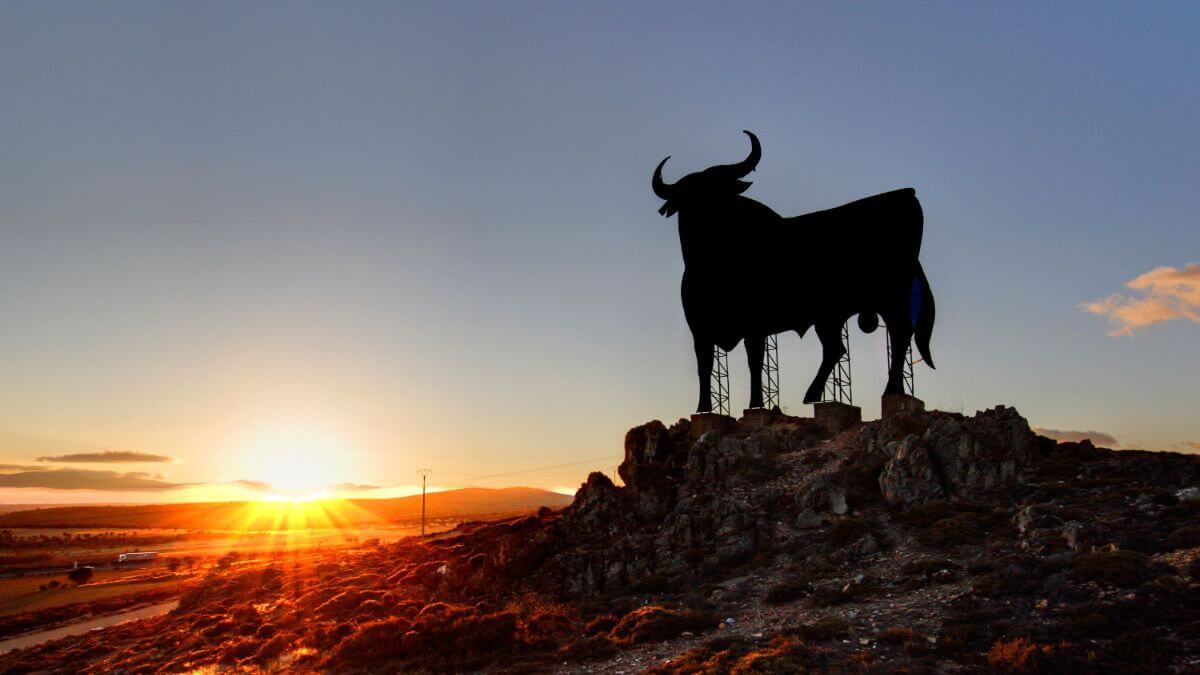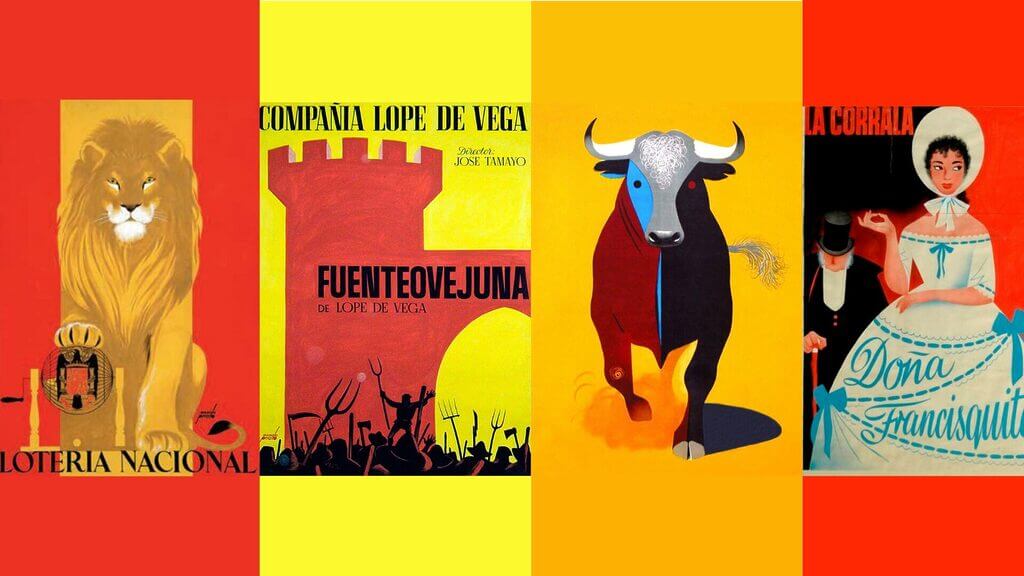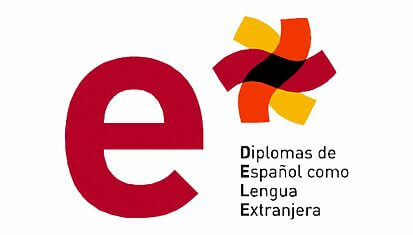On the winding roads of Spain, a majestic silhouette rises against the horizon, standing out against the sky. This is the Osborne Bull, a symbol deeply rooted in Spanish identity and marketing history. Since its creation in 1956, it has captured the public’s imagination and left an indelible mark on Spanish society.
It is a huge black bull silhouette, about 14 metres tall, that stands on various Spanish roadsides. Originally conceived in 1956 as a billboard to promote Osborne’s Veterano brandy during the Seville Fair, the bull has transcended its initial purpose. Despite restrictions on roadside advertising, it has become a cultural icon of Spain and remains a national symbol, even after the brand’s name was removed.
Who is Manolo Prieto?
The Osborne Bull was born from the creative mind of Manolo Prieto, a Spanish artist tasked with designing an advertising campaign for the Osborne company, known for its brandy. In 1956, Prieto crafted the silhouette of a black bull against a white background, a simple yet powerful design meant to stand out in the Spanish landscape and remind drivers of the quality of Osborne’s brandy.
Besides creating the Osborne Bull, Manolo Prieto was a prolific advertiser who left a significant mark on Spain’s advertising industry. Some of his other notable works include:
- Advertising brands
- Osborne logo: In addition to the Osborne Bull, Prieto designed the company’s logo, which features the word “Osborne” in white letters on a dark blue background. This logo has been used on a variety of the company’s products.
- Graphic design: Prieto also ventured into graphic design beyond advertising. He contributed to the design of posters, logos, and other visual elements for various companies and organizations.
- Teaching: Alongside his work as an advertiser, Manolo Prieto was also teacher at the School of Advertising in Madrid. He shared his knowledge and experience with new generations of advertising professionals.
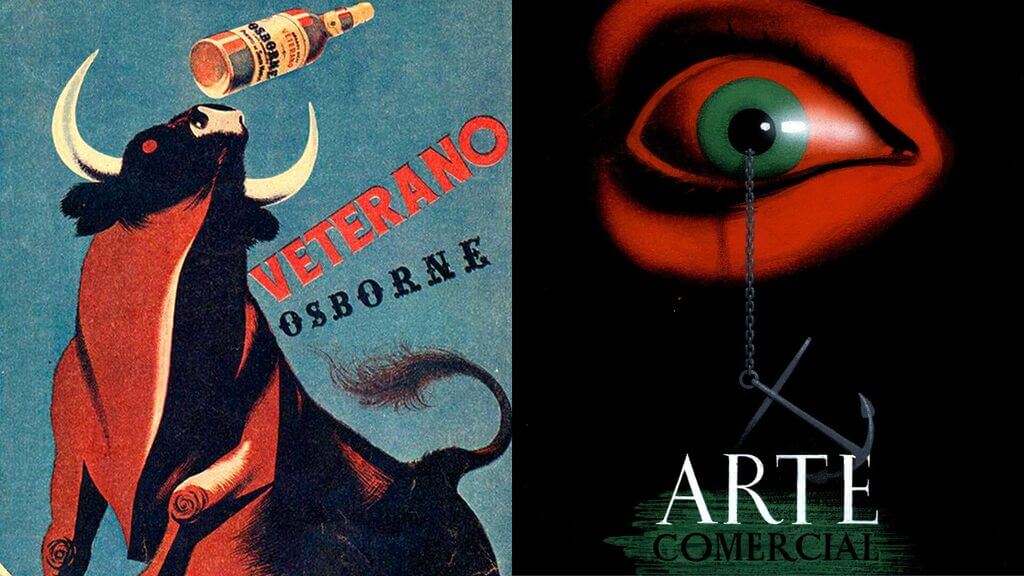
What was the creative process like?
The creation of the Osborne Bull was an exercise in simplicity and effectiveness. Prieto sought a symbol that would be easily recognizable and convey strength and tradition. The choice of the bull, an animal emblematic in Spanish culture and historically associated with strength and power, was accurate. The black silhouette against a white background allowed for clear and quick visibility from the road, perfectly fulfilling its advertising purpose.
Founded in 1772, the Osborne company became an iconic name in Spain’s liquor and wine industry. However, the Osborne Bull catapulted the brand to a new level of recognition. The image of the bull became closely associated with the company and turned into a symbol of quality and authenticity, not just for the brandy but for all Osborne products.
The removal from roads: a national debate
In 1994, Spanish authorities ordered the removal of the Osborne Bull signs from the roads as part of stricter regulations on outdoor advertising. The decision caused a national debate about cultural identity and the protection of visual heritage. Many Spaniards viewed the bull as an integral part of the landscape and as a symbol of national identity.
While most of the Osborne Bull signs disappeared from the roads, its legacy in Spanish marketing endures. The bull became a case study on the effectiveness of branding and outdoor advertising. Its simplicity and its ability to resonate with the public made it an example of how a symbol can transcend its original function and become part of a nation’s collective imagination.
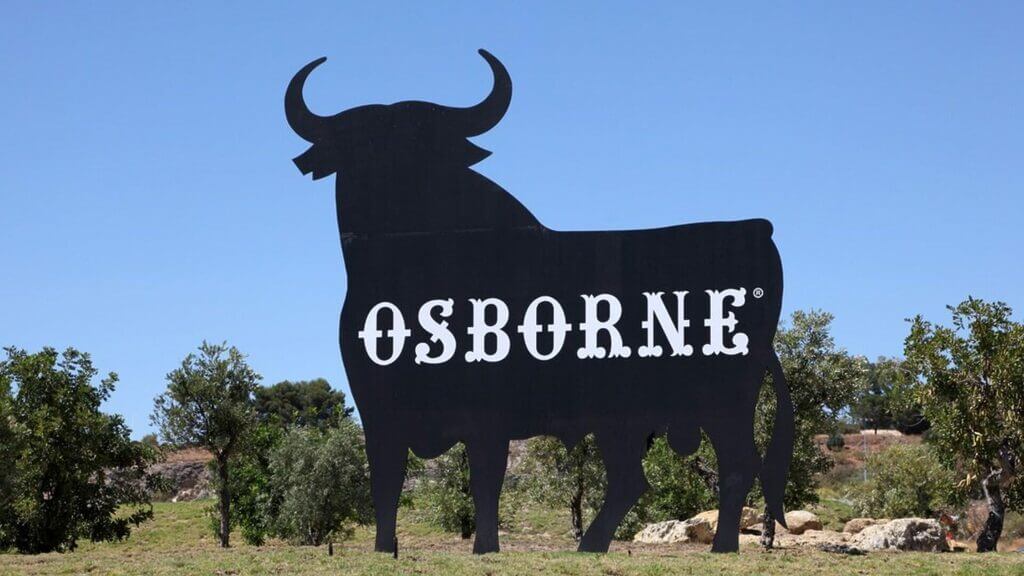
Are these signs still on Spanish roads?
At the time of the ban on placing new signs in 1994, it is estimated that there were around 500 Osborne Bull signs distributed along the roads of Spain. After the order to remove the signs, the physical presence of these advertising billboards declined considerably. However, some of the original bulls still stand in various locations across the country, especially in rural areas where local authorities have allowed their preservation for cultural and historical reasons.
The exact number of Osborne Bull advertising signs that remain on Spanish roads today can vary, as some have been removed over time due to degradation or local decisions, while others have been preserved for their cultural and historical value.
Additionally, there is no updated official record providing the exact number of signs still standing. The quantity may vary depending on the region and conservation decisions made by local authorities.
Even though the original signs are no longer erected in new locations, the image of the Osborne Bull continues to be used by the Osborne company and reproduced in various media and commercial products as part of their branding. It is also common to see representations of the bull in the form of souvenirs, artworks, and other cultural elements in Spain, including on the Spanish flag.
Fuente: fundacionmanolocreator.org
Cultural influence: a symbol of identity
The Osborne Bull was not only a marketing success but also became a symbol deeply rooted in Spanish culture. It has been depicted in artworks, become a topic of discussion in academic circles, and celebrated in cultural festivals. The bull has incorporated itself into the very fabric of Spanish society, recognized as an emblem of strength, tradition, and national pride.
The legacy continues: an icon of the 21st century
Despite its removal from the roads, the Osborne Bull remains relevant in the 21st century. Its image is reproduced on a wide range of products, from t-shirts to coffee mugs, keeping its presence alive in the daily lives of Spanish people. Furthermore, its influence in marketing remains evident, serving as inspiration for advertising campaigns and branding strategies throughout Spain.
